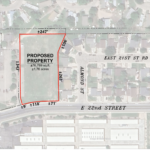Weld real GDP drops 11% in 2020, fourth worst in Colorado
Weld County’s real gross domestic product dropped 11.5% in 2020 as the economy suffered from the COVID-19 pandemic, including sharp declines in demand for oil and natural gas.
The data look even worse when examining nominal GDP. While real GDP represents the total value of goods and services produced, adjusted for inflation, nominal GDP calculates the total value of goods and services produced in current dollars.
By that measure, Weld County’s GDP plunged 20.7% from 2019 to 2020.
County-level GDP data released Wednesday by the Bureau of Economic Analysis shows Weld County producing $20.96 billion in real GDP last year, down from $23.69 billion in 2019.
The numbers are in chained 2012 dollars, with the BEA adjusting prior-year GDP numbers to incorporate revised source data.
In nominal GDP terms, the county produced $16.7 billion in goods and services, compared with $21 billion the prior year.
Brian Lewandowski, executive director of the Business Research Division at the University of Colorado Boulder’s Leeds School of Business, said examining nominal GDP provides another way of looking at the data, including a true measure of how much an economy grows or shrinks.
“Nominal GDP is the dollars that we’re actually spending from year to year,” Lewandowski said. “How much did their economy actually shrink by? When I look at it that way, their economy got smaller by 21%.”
The biggest contributing factor in Weld County’s economic decline in 2020 was lower production of oil and natural gas, exacerbated by plummeting energy prices.
“Nominal GDP from the mining industry, which we know in Weld County is mostly oil and gas, dropped 60%,” he noted. “Real GDP is stripping off price changes, so what real GDP is showing is that decrease in volume of activity, how many widgets did you sell. Nominal GDP is looking at the number of widgets that you sold times the changes in price.”
Plunging energy prices, as experienced in 2020, magnify the impact of declines in demand.
“So this industry that has contributed so much to the growth of Weld County … when it took such a price hit in 2020, we did see production fall, but it was that additive factor of prices falling and production falling that led to a steep decline in GDP in Weld County that was much steeper than the decline in the overall economy nationally and overall economy in Colorado,” Lewandowski said.
Lewandowski noted that oil and gas represent a much bigger percentage of the Weld County economy than they did 20 years ago, climbing from 4.3% of nominal GDP in 2001 to 31.4% in 2019. That percentage dropped to 15.7% in 2020.
“We’ve seen this in the past. It’s just that oil and gas is just such a larger component of GDP now in Weld County than it was 20 years ago that it hurts a little bit more these days when you have those types of swings,” he said.
In real GDP terms, only three other Colorado counties — Gilpin, Jackson and Montezuma — fared worse than Weld, with negative GDP growth of 12.1%, 12.4% and 14.7%, respectively. Weld ranks No. 7 statewide in terms of total GDP.
Other counties in the Boulder Valley and Northern Colorado region posted smaller declines:
- Boulder County’s real GDP totaled $26.6 billion, down 3.2% from $27.5 billion in 2019. Boulder ranked No. 42 statewide in GDP percentage change from 2019 and No. 5 in total GDP. The biggest contributors to Boulder County’s negative GDP were the private services-providing sector; professional, scientific and technical services; professional and business services; arts, entertainment, recreation, accommodation and food services; and information.
- Broomfield’s real GDP totaled almost $6.89 billion in 2020, down 0.6% from $6.94 billion the prior year. Broomfield ranked No. 29 in GDP percent change from 2019 and No. 10 in total GDP. The biggest contributors to Broomfield’s negative GDP were arts, entertainment, recreation, accommodation and food services; private goods-producing industries; management of companies and enterprises; manufacturing; and finance, insurance, real estate, rental and leasing.
- Larimer County’s real GDP totaled $18.62 billion, down 1% from $18.8 billion in 2019. Larimer ranked No. 32 statewide in GDP percent change from the prior year and No. 31 in total GDP. The biggest contributors to Larimer’s negative GDP were arts, entertainment, recreation, accommodation and food services; private services-providing industries; finance, insurance, real estate, rental and leasing; manufacturing; and manufacturing and information.
Elsewhere in Colorado, San Juan County recorded the highest real GDP growth statewide, jumping 53.1% to $50.88 million from $33.2 million. Rounding out the Top 5 Colorado counties in GDP growth were Baca, up 35.2%, Washington, up 22.1%, Kit Carson, up 10.9% and Lincoln, up 16.7%.
Nationwide, real GDP increased in 864 counties and decreased in 2,234 counties, according to the BEA. The percent change in real GDP ranged from 91% in Foard County, Texas, to -29% in Skagway Municipality, Alaska.
© 2021 BizWest Media LLC
Weld County’s real gross domestic product dropped 11.5% in 2020 as the economy suffered from the COVID-19 pandemic, including sharp declines in demand for oil and natural gas.
The data look even worse when examining nominal GDP. While real GDP represents the total value of goods and services produced, adjusted for inflation, nominal GDP calculates the total value of goods and services produced in current dollars.
By that measure, Weld County’s GDP plunged 20.7% from 2019 to 2020.
County-level GDP data released Wednesday by the Bureau of Economic Analysis shows Weld County producing $20.96 billion in real GDP last year, down from $23.69…
THIS ARTICLE IS FOR SUBSCRIBERS ONLY
Continue reading for less than $3 per week!
Get a month of award-winning local business news, trends and insights
Access award-winning content today!





